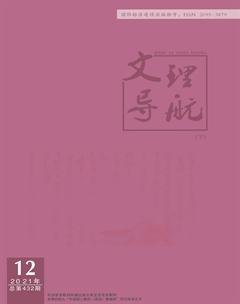智慧教学,构建熠熠生辉的英语课堂
徐小红
【摘 要】随着社会和家庭对英语学习的重视,孩子们整体的英语水平明显提高了。身处日新月异的新时代,如何使小学英语教学更贴近学生的实际,使我们的课堂熠熠生辉,真正实现中小学英语教学的连续性和一体化,是值得一线小学英语教师深思的问题。
【关键词】高效课堂;课程资源;中小衔接
本文以译林英语教材为例,结合日常教学中的做法,谈谈自己的一些看法。
一、立足核心素养,构建高效英语课堂
(一)层次化教学,满足学生差异化需求
在英语教学中,教师应当真正把分层教学和分层作业落到实处,艺术性地吸引每一个孩子投入到学习中。
教学四年级下册Unit 7 Whats the matter?在理解了Storytime文本内容后,笔者逐步把主题引向深入:
1.Liu Taos father and mother are worr-ied about him. They both care about him. What do they say to him? Read in your groups, choose the way you like.
2.If you are Liu Taos father or Liu Taos mother, what do you say to him? You can use the sentences: Are you...?/Come and have…/Heres…for you.
3.Fathers and mothers love their childr-en, they care about them. We should care about our family, too. Look, this is Peppas family.(Three pictures: Daddy is doing some exercise; Mommy is busy doing housework; Brother is ill, hes staying in bed.) If you are Peppa, what do you say to them? You can choose one picture, and talk about it.
六年级上册Unit 2 What a day!重点之一是“天气类单词”的词形转换。笔者设计了这样的分层作业:
★认真抄写cloudy, rainy, sunny, windy三遍,背熟;熟练朗读Storytime。
★★用所给词的适当形式填空,如:
There were black__________in the sky.(cloud)
The weather became______(wind) this mor-ning.
Its______. The_______is shining.(sun)
★★★关注电视里的天气预报,做个“小小气象播报员”,下一节课汇报。
(二)情景化教学,实现由学习走向生活
小学英语教学要以小学生的生活经验和兴趣为出发点,内容和方式要尽量真实。教师可以创设如打电话、过生日、购物、旅游、问路、看病等贴近学生生活的任务型活动,开展交互式、合作式的学习。
在教学中,笔者常鼓励学生课前一到三分钟On duty,可以选一个自己喜欢的话题聊聊。近日,六年级的一位同学演讲了一段My mother,精美的PPT,配之以声情并茂的演讲,妈妈的形象靈动地展现在大家的面前(节选部分内容):
Now, I understand my mother. She gets up early every day. She cooks delicious food for us. When I get up in the morning, the porrige is either hot or cold, its just right. She goes to bed late at night. She is the busiest in my family. We are friends now. We chat with each other every day. I can say what I want to say. I can do what I want to do. Sometimes, I even think she is like a child. We love each other.
二、丰富课程资源,拓展英语学习渠道
丰富多样的课程资源对语言学习尤其重要,在英语教学中,教师应根据教和学的需求,提供接近生活,贴近时代的英语学习资源。
(一)绘本课程,体会人生哲理
日常教学中,笔者常采用英语绘本阅读的方式来辅助英语教学,从而提高孩子们英语学习的能力。通过一个个生动有趣的故事,使其体会人生哲理。如在五年级的教学过程中,我选择了这样两个绘本故事:
1.A little snail: Nothing is difficult to one who would like to try.
A little snail lives at the bottom of a tree. He has a hard shell. He climbs slowly. But he wants to climb to the top of the tree. He wants to see the big world. But Bird, Parrot and Giraffe all say,“You cant get to the top of the tree.”The snail never gives up. He climbs and climbs, step by step. At last, he climbs to the top of the tree. He see the beautiful world.
2.The little horse and the river: Real knowledge comes from practice.
One day, a little horse was asked to carry the wheat to the mill. On his way, a river stopped him. The little horse did not know if he could cross it. He asked Uncle Cow and the little squirrel, but they gave him different answers. The little horse was confused and he went back home to his mother. Mother horse asked him to try it by himself. At last, the little horse walked carefully across the river. He found the river was neither too shallow nor too deep. It was just OK for him.
(二)时尚歌曲,顺应时代发展潮流
无论是知识呈现,还是语言操练,单一的方式都难以使学生保持对英语的兴趣,歌曲的巧妙运用为丰富教学形式提供了可能。在高年级教学的过程中,教师可以引入一些当下最fashion的歌曲,如英文版的《我和我的祖国》。
(三)有声电影,把努力的视角拉回当下
2020年突如其来的疫情,好似在我们的生活中按下了暂停键。也正是经历了这些,我们发现生活远比想象得要美好。电影《心灵奇旅》(Soul)治愈了很多人不安、焦虑的灵魂。
原来灵魂的“火花”,并不是我们的想象中的宏大蓝图,它可能是一颗果实、一粒纽扣,还可能是pizza的味道、街头艺人的歌声……
Your spark isnt your purpose, that last box fills in when you are ready to come live.
——Soul
三、注重中小衔接,渗透初中英语知识
《英语课程标准》指出:英语学习是一个有机整体,小学英语和初中英语密不可分,小学英语是中学英语的基础,中学英语是小学英语的延伸。为此,小学英语教师应该通读初中教材,了解初中英语的教学目标及要求,在教学时,潜移默化地渗透相关的教学内容。
案例一:感官动词+sb.+doing/do+sth.
五年级下册Unit 5 Helping our parents, Sound time中有这样两个句子:
In the morning, I like to sing. And watch the flowers growing.
In the evening, I like to sit. And listen to the wind blowing.
这里的watch, listen to是感官动词,watch the flowers growing看着花儿正在生长;listen to the wind blowing听着风儿正在吹。类似的感官动词还有see, smell, taste, feel, find, notice等。可以拓展举例:
1.I can hear someone singing next door.我能听见有人正在隔壁唱歌。(hear sb. doing sth. 听见某人正在做某事)
2.Nick sees an apple dropping from the tree.尼克看见苹果正在从树上掉下来。(see sb. doing sth. 看见某人正在做某事)
但需要告诉孩子们的是,这些感官动词后面接V-ing表示的是“正在……”;后面也可以接“动词原形”,表示的是“整个过程”。如,
1.I felt somebody touch me.我感觉某个人碰了我一下。(feel sb. do sth. 感觉某人做了某事)
2.I saw Jack put his key in the lock, turn it and open the door.我看见汤姆把他的钥匙放进了锁里,转动它,然后打开了。(see sb. do sth. 看见某人做了某事)
案例二:短语有无定冠词the的差异
五年级下册 Unit 4 Seeing the doctor, Car-
toon time的主要内容是Bobby在医院做义工。Monkey, Rabbit, Elephant来看病,Bobby都用了绑绷带的方式进行了处理。其中的hospital前面都有定冠词the:
Bobby helps in the hospital. 波比在医院帮忙(做义工)。
Giraffe comes to the hospital. 长颈鹿来到了医院。
六年级上册Unit 6 Keep our city clean, Cartoon time讲述了在放学途中,Bobby一遍和Tina谈论自己喜欢城市生活的理由,一边却乱丢香蕉皮破坏城市环境,导致后面Billy滑了一跤。这里的hospital前面却没有定冠词the:
Billy goes to hospital. 比利去医院。
当有孩子质疑“hospital前面,为什么有时有the,有时没有the”的时侯,笔者适时渗透了初中的一些知识点,如:
1.in hospital住院; in the hospital在医院
2.at school在上学; at the school在学校
案例三:a little/little & a few/few
六年级下册Unit 3 A healthy diet, Story time目标之一是正确使用a few和a little这两个词在意思上相近,都表示肯定含义,修饰或指代比some(一些)少的数量。不同的是,a few和可数名词连用,表示“几个”,如a few apples, a few vegetables;而a little与不可数名词连用,表示“一点儿”“少许”,如,a little rice, a little water.教材中的句子是这样的:
He has a few eggs every week.他每周吃几个鸡蛋。
She only drinks a little rice. 她只吃一点点米饭。
在学生已经熟练地掌握了a few和a little的用法后,笔者尝试补充了few和little的用法。这两个词都表示否定含义。不同的是,few和可数名词连用,表示“没几个”;而little和不可数名词连用,表示“很少”,如:
1.He has few friends. 他朋友很少。
The film is not interesting. Few people like it. 电影无趣,没几个人喜欢。
2.We had little time to do it. 我们没什么时间做此事。
The little boy is very busy. He has little time to play. 這个小男孩很忙,他很少有时间玩。
总之,小学英语是一门趣味学科,而小学英语教学是富有智慧的教学,它需要我们在生活中不断尝试,在实践中不断摸索,这样才能使我们的课堂熠熠生辉,真正实现中小学英语教学的连续性和一体化。

